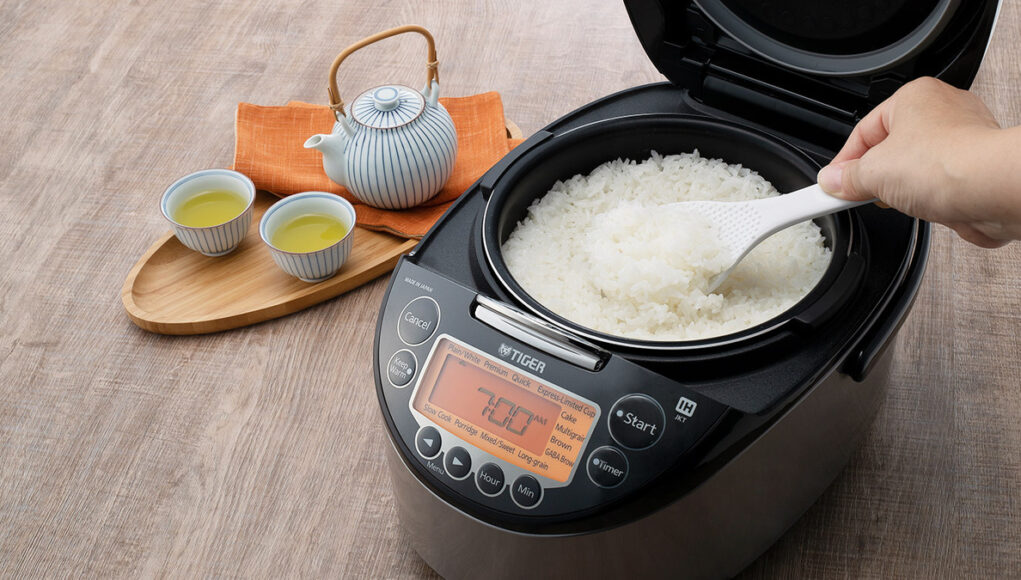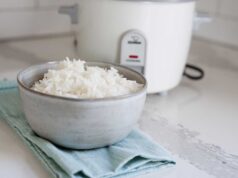If you’ve ever wondered how to cook Persian rice in a rice cooker, you’ve come to the right place. Persian rice, known for its fluffy texture and fragrant aroma, has captured the hearts of food enthusiasts around the globe. Although preparing it traditionally on the stove requires patience, using a rice cooker simplifies the process without sacrificing flavor or texture. Whether you are a beginner or an expert in rice cooking, this article serves as a comprehensive guide to making perfect Persian rice with ease.

Why Persian Rice is Worth the Effort
Persian rice dishes are iconic and deeply rooted in Iran’s culinary traditions. What makes Persian rice extraordinary is its delicate balance of flavor, aroma, and texture. The golden crust, also known as tahdig, is the star of the show, a crispy bottom layer that adds a satisfying crunch to every bite. By using a rice cooker, you can skip the trial-and-error phase and consistently create this delicacy in your own kitchen.
Ingredients You’ll Need
- 2 cups of basmati rice (preferably aged)
- 3 tablespoons of salt
- 4 cups of water
- 3 tablespoons of vegetable oil or butter
- A pinch of saffron or turmeric for that vibrant yellow hue (optional)
Step-by-Step Guide: Cooking Persian Rice in a Rice Cooker
1. Rinsing the Rice
The first and most crucial step to achieving fluffy Persian rice is rinsing the grains thoroughly. Place the rice in a bowl, and wash it under cold water multiple times until the water runs clear. This process removes excess starch, preventing the rice from clumping together.
2. Soaking the Rice
While technically optional, soaking is highly recommended. Soak the washed rice in a generous amount of saltwater for at least 30 minutes. This aids in better water absorption and ensures evenly cooked grains. Use your trusty cutting board to prep any garnish for later.
3. Prepping the Rice Cooker
If your rice cooker has a non-stick setting, now is the time to activate it. Add oil or butter to the cooker. Layer a thin sprinkling of cooked saffron for an aromatic twist. Then, carefully pour in the soaked rice, taking care to avoid breaking the grains.
4. Adding Water
For fluffy rice, the golden water-to-rice ratio is paramount. Use approximately 2 cups of water for every cup of rice. This ensures that your rice remains tender but not soggy.
5. Start Cooking
Close the rice cooker lid and set it to the ‘White Rice’ or default cooking mode. Depending on your rice cooker model, cooking time should be between 30 to 40 minutes. Do not open the lid during this time, as it disrupts the steaming process.
Tips for a Perfectly Crispy Tahdig
To achieve a crispy bottom layer (tahdig), increase the rice cooker’s heat level in the final 5 minutes. Once the timer is up, unplug the rice cooker and let it sit for an additional 10 minutes. This resting period ensures that your crust remains intact when you invert the cooker pot onto a serving platter.
Serving Persian Rice with Style
Persian rice pairs beautifully with a variety of dishes, from classic chicken stews to vegetarian delights. Divide the rice into a serving bowl, being careful not to disturb the tahdig. You can use a fried rice technique from our blog for a creative twist.
Common Mistakes to Avoid
Even seasoned cooks can slip up when making Persian rice. Here are some common pitfalls to avoid:
- Forgetting to rinse the rice properly
- Using the wrong type of rice
- Opening the rice cooker lid prematurely
Cleaning Up and Caring for Your Cookware
To ensure the longevity of your rice cooker, use a cookware cleaner after every use. Clean your cutting board with some cutting board oil to maintain its quality.

Closing Thoughts
Learning how to cook Persian rice in a rice cooker combines tradition with modern kitchen convenience. The end resulta plate of perfectly cooked, aromatic rice topped with crispy tahdigis worth every step. Explore more rice-based recipes by visiting our guide to cooking beans in a rice cooker.
For more rice-cooker recipes and ideas, check out a fantastic resource on Cookpad, where food lovers share their creativity.
This article contains affiliate links. We may earn a commission at no extra cost to you.











